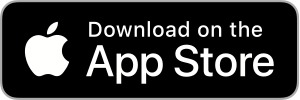Tsedal Neeley is a professor at the Harvard Business School, an award-winning scholar, and an expert on the intersection of work, technology, and organizations. She specializes in how to scale organizations by developing global and digital strategies, regularly advising top leaders who are looking to have more productive, satisfied, and agile teams. Her work has been featured on BBC, CNN, Forbes, Financial Times, MarketWatch, the New York Times, NPR, the Wall Street Journal, The Economist, and many other outlets.
Below, Tsedal shares 5 key insights from her new book, Remote Work Revolution: Succeeding from Anywhere (available now from Amazon). Download the Next Big Idea App to listen to the audio version—read by Tsedal herself—and enjoy Ideas of the Day, ad-free podcast episodes, and more.
1. Autonomy drives productivity.
Productivity goes up, not down, with remote work—provided some conditions (such as autonomy) are met. Autonomy alters the degree of control leaders have over virtual employees’ working conditions and processes. Through remote work, people have a greater ability to shape the two factors of space and time. They have the flexibility to control where, when, and how one gets the job done. This is one of remote work’s most appealing benefits.
Keep in mind that autonomy doesn’t mean giving employees free rein to do whatever they want. Even if they’re out of sight, remote workers are still accountable to their teammates, goals, and productivity agreement. Nor is autonomy equivalent to isolation. Employees still need connection, leadership, guidance, and feedback, but by leaning into the inherent flexibility of the remote format, people gain confidence, agency, and efficiency. What this means is leaders, when assessing productivity, should focus on outcome, not process.
2. Trust is not one-size-fits-all.
Trust is one of the most explored topics in remote work. In fact, social scientists have been preoccupied with the science of trust and remote teams since the 1990s. Understanding trust’s role in remote work is key because trust is the glue that binds remote teams together, yet it’s hard to establish and maintain when people are physically apart.
The first thing to recognize is that trust is not binary, nor is it one-size-fits-all. Instead, we have a nuanced palette of trust available to us. The two basic types of trust are cognitive trust and emotional trust. Cognitive trust is grounded in the belief that your coworkers are reliable and dependable because you’ve considered their qualifications and deem them capable to do the tasks at hand. This type of trust is usually confirmed or disproven over numerous experiences and interactions.
“Leaders, when assessing productivity, should focus on outcome, not process.”
On the other hand, emotional trust is grounded in coworkers’ care and concern for one another. Relationships built on emotional trust crop up most easily when team members have values, mindsets, or experiences in common. Cognitive trust has a lower threshold than emotional trust, which requires a strong emotional bond to form over time. As a result, cognitive trust can be conferred quickly among team members so that it’s possible for teams to rapidly pull together around goals. Most remote teams can meet their goals with high levels of cognitive trust, regardless of the level of emotional trust.
Remote colleagues, even if they begin without having met face to face, can work well together within a team with a fairly shallow level of emotional trust, but a fairly intense and quickly gained cognitive trust.
3. Don’t choose digital tools randomly.
Digital tools in remote environments are conduits for working—they’re not just communication tools. Today, there are so many from which to choose, but what we find is that people have certain preferences that they go for over and over again.
It’s really important to pause and consider two important purposes for the use of digital tools. The first one is called conveyance. Meaning, what’s your top choice for the transmission of new information? The second one is called convergence. Convergence describes communication in which people must discuss and interpret in order to come to a collective agreement. Both conveyance and convergence are crucial to advance work goals.
If we know whether we’re conveying or converging, it helps us narrow down which digital tool we need in that moment. It forces us to think intentionally, understanding that we need to match conveyance or convergence goals to the digital tools available to us. This also means we need to weigh whether we need synchronous, asynchronous, rich, or lean media for work goals. And there are so many other features to consider in regards to communication capture and information storage. For instance, delays that we need in order to give people time to process content. Whether you need conveyance or convergence should drive the digital tools you use.
“Trust is the glue that binds remote teams together.”
4. We need mature self-disclosure in remote work.
I went to get my car fixed yesterday. I’m looking forward to resting during my vacation next week. I’m worried about my sister, who’s recovering from a serious illness. These statements are examples of what social scientists call self-disclosure, which is the process of revealing your experiences, preferences, concerns, and aspirations to other people. The act of opening up changes colleagues’ perception of you, and they will actually find you more likable and approachable.
It’s incredibly important for remote workers who don’t have regular interactions in a common space, where informal information exchange occurs more naturally, to open up in a virtual context. Opportunity occurs, particularly, in the more casual conversations that often ensue at the beginning or end of group meetings. Sometimes you have to structure unstructured time at the top of a meeting, literally asking people how they are or create a prompt so that self-disclosure can occur. These moments can also take place asynchronously through emails or chats or video posts.
It’s key, however, that all self-disclosure remains mature. While people get to choose when and how they want to self-disclose, it’s important not to tread into the “too much information zone” which can make others uncomfortable or offended. You need to be thoughtful about the self-disclosure that you do. Leaders have important roles in modeling self-disclosure to teams in ways that are explicit, intentional, and voluntary.
5. Leaders have to motivate while invisible.
Leaders have to create and maintain conditions that realize their virtual teams’ own capacity and power. There are many ways to accomplish this.
“Leaders have important roles in modeling self-disclosure to teams in ways that are explicit, intentional, and voluntary.”
First, leaders need to build and stress a singular group-level identity that binds the remote team together and reminds members that they represent the team. This is necessary because a natural, but detrimental, aspect of remote work is that people will fragment, and you will end up with subgroups. The group-level identity narrative that you continually message is the thing that will pull people back together.
Then there is predictability. Remote workers crave predictability, and leaders can support this by connecting people to the big picture. Keep the team updated on what’s going on at the organization, the industry, and even their ecosystem. If you don’t have any updates to share, it’s okay to say so, but you can be transparent about certain organizational circumstances. It’s really important to connect the remote workers around such pillars, because it gives them the sense of predictability that they need from a leader.
Furthermore, development research shows that remote workers are no less likely to perform well and advance in their careers than co-located workers. However, high-performance and advancement requires that leaders provide appropriate and constructive feedback to support individual goals. This idea of developing people has to be dialed up in a remote environment so that you create parity among your group.
A related issue is inclusion. Geographically distributed teams are especially likely to have diverse members across many dimensions, including nationality, age, gender, race, religion, education, experience, and culture. These differences are both a strength and a challenge, so practicing inclusive leadership is crucial. At every turn, highlight individual strengths. Ensure that people communicate in a way where every member can contribute to common discourse, which may mean helping dial dominant members down.
These bits of advice are just a sampler platter of what it takes to lead a team to its maximum capacity and power.
To listen to the audio version read by Tsedal Neeley, and browse through hundreds of other Book Bites from leading writers and thinkers, download the Next Big Idea App today:































